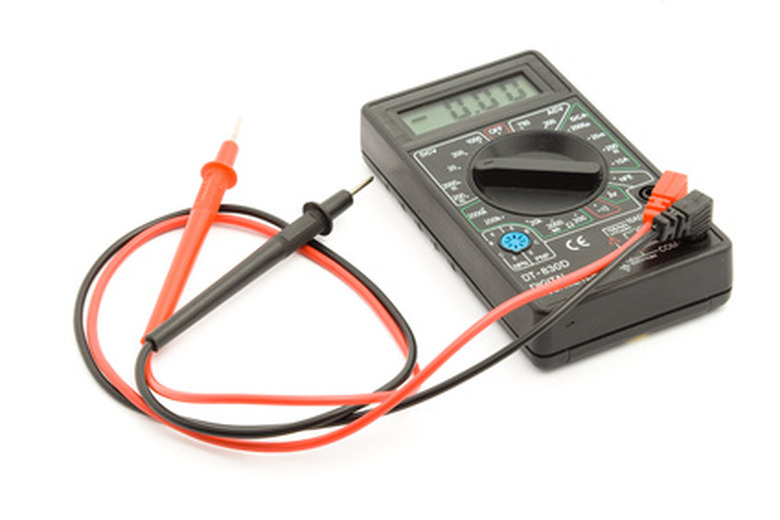How To Find A Short In A Circuit Board
Locate a short in a circuit board to prevent possible accidental shock or a fire. In addition, verifying a short circuit will help you determine whether to replace the device containing the circuit board. A short is a place on a board where electrical current no longer passes. Also, devices such as resistors and capacitors on a board may short and become inoperable. Resistors limit current flow, while capacitors store it. The flow of electrical current is governed by Ohm's law, which states current equals voltage divided by resistance.
Step 1
Turn on the digital multimeter by pushing the "Power" button.
Step 2
Turn the measurement setting dial on the multimeter to DC current. This is designated by a capital "A" with straight lines over it. The "A" stands for the amp, which is the unit for electrical current.
Step 3
Test all devices on the circuit board, one at a time, by touching the red and black probes of the multimeter to either side of the device. A zero current reading indicates a short circuit.
Step 4
Test the wires that connect the devices on the board by placing the red and black probes of the multimeter on opposite ends of a given wire. A zero current reading indicates a short.
Cite This Article
MLA
Hirsch, William. "How To Find A Short In A Circuit Board" sciencing.com, https://www.sciencing.com/short-circuit-board-7818140/. 24 April 2017.
APA
Hirsch, William. (2017, April 24). How To Find A Short In A Circuit Board. sciencing.com. Retrieved from https://www.sciencing.com/short-circuit-board-7818140/
Chicago
Hirsch, William. How To Find A Short In A Circuit Board last modified March 24, 2022. https://www.sciencing.com/short-circuit-board-7818140/
